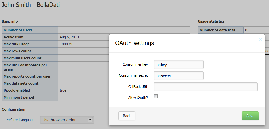The REST API is the underlying interface for our mobile BI BellaDati Piccolo. It's the most direct way to access the API. This reference document is designed for those interested in developing for platforms not supported by the SDKs or for those interested in exploring API features in detail.
General notes
Enable REST API
Before you can use the REST API calls, you need to enable it in your application account:
After specifying the consumerKey and consumerSecret, you will be able access the REST API interface.
Base URL
The base address to access the REST API is:
SSL only
We require that all requests are done over SSL.
The On-Premise version users can setup the non-SSL mode.
UTF-8 encoding
Every string passed to and from the BellaDati REST API needs to be UTF-8 encoded. For maximum compatibility, normalize to Unicode Normalization Form C (NFC) before UTF-8 encoding.
Locale global request parameter
BellDati REST API uses the locale parameter to specify language settings of content responses. If your app supports any language other than English, insert the appropriate IETF language tag. When a supported language is specified, BellaDati will return translated content or error fields (where applicable).
Error handling
Errors are returned using standard HTTP error code syntax. Any additional info is included in the body of the return call, JSON-formatted. Error codes not listed here are in the REST API methods listed below.
Standard API errors
Code |
Description |
|---|---|
400 |
Bad input parameter. Error message should indicate which one and why. |
401 |
Bad or expired token. This can happen if the user or BellaDati revoked or expired an access token. To fix, you should re-authenticate the user. |
403 |
Bad OAuth request (wrong consumer key, bad nonce, expired timestamp...). Unfortunately, re-authenticating the user won't help here. |
404 |
File or folder not found at the specified path. |
405 |
Request method not expected (generally should be GET or POST). |
503 |
Your app is making too many requests and is being rate limited. 503s can trigger on a per-app or per-user basis. |
5xx |
Server error. |
